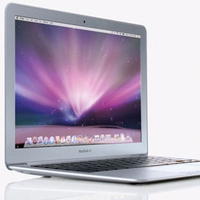MacBook Air tear-down: Look inside but don't touch?


As usual, iFixit's MacBook Air "first look" tear-down shows both the number of screws needed to attack each component inside the case, but their type and location. The article said "getting to the 'user-installable' parts is going to be a bit more challenging than usual."
I've cracked open every Mac I've owned, but looking at the iFixit guide makes me wonder. The tight quarters inside the MacBook Air might make me more nervous than usual. I might wear a surgical mask so that I didn't sneeze or sweat on the logic board.
Of course, other Macs are designed for upgrading, providing easy access to memory, drives and battery. The part that we most want to gain access to is that battery. However, you have to remove 19 screws to get the battery out of the case. iFixit says that "replacing the battery is straightforward, but not something you'll be doing when your battery dies mid-flight."
Here are a couple of other items I found interesting in the guide:
Hard drive. Unlike the MacBook Pro, swapping the 1.8-inch drive is difficult. It's also padded with foam and has rubber bumpers.
Heat sink. iFixit shows a novel thin heat sink for the small-package Intel Core 2 Duo.
The L-shaped aluminum bracket on the heat sink rests tightly against the lower case, providing thermal conductivity without making an electrical connection to the chassis. The inside of the lower case has a patch of non-conducting material to aid this thermal dissipation.
You can see the RAM soldered on the logic board in this image.